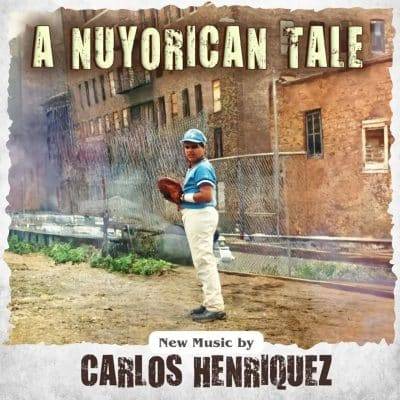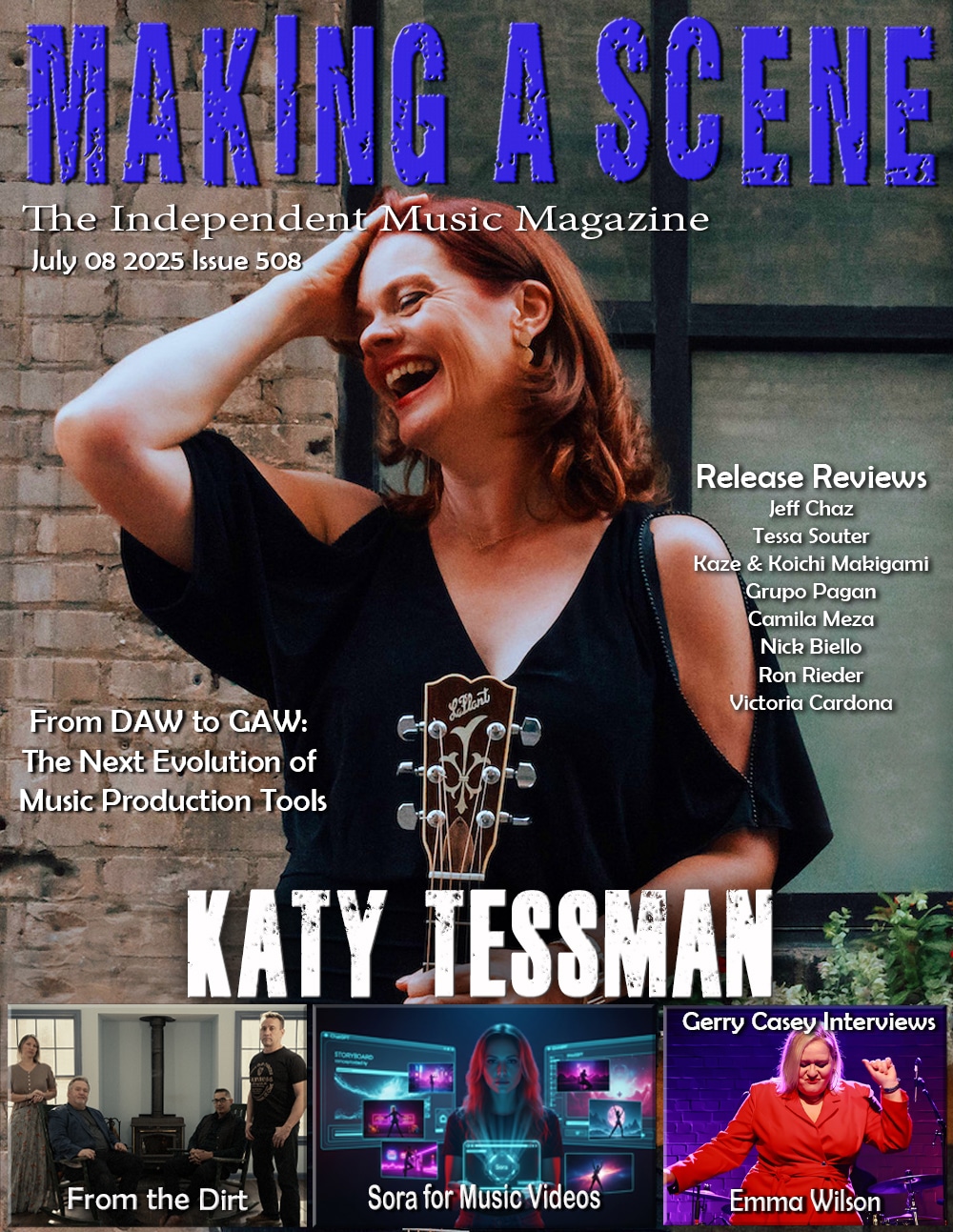Carlos Henriquez A Nuyorican’s Tale
 Carlos Henriquez
Carlos Henriquez
A Nuyorican’s Tale
Tiger Turn
To begin, this writer has just a wee bit of egg on his face for the first part of this sentence in the review of Carlos Henriquez’s The South Bronx Story that read as follows – “This project will never reach {West Side Story’s”} lofty stature but is more comprehensive in terms of the Puerto Rican diaspora, teeming with outstanding compositions and astute musicianship throughout.” Well, surely West Side Story is iconic, but Henriquez’s album garnered a Grammy nomination, hence achieving some lofty status of its own. Now his follow-up may raise the question with many as to what is a “Nuyorican”? They are people of Puerto Rican birth of descent who are current or former residents of New York City. And, if you are not familiar with Henriquez, he is best known as the bassist for the Jazz at Lincoln Center Orchestra, a position he has held for over two decades. Henriquez is also a composer and bilingual artist, stepped in the Latin music of his Puerto Rican heritage. Currently, many acknowledge him as the most important Latin artist in NYC and A Nuyorican’s Tale is further proof as he delivers a musical educational and social history retrospective this time, mostly of Manhattan, filled with racial tension and struggles of the Puerto Rican cultural experience.
The same musical team returns, including trombonist Marshall Gilkes, saxophonist Melissa Aldana, pianist Robert Rodriguez, drummer Obed Calvaire, trumpeters Michael Rodriguez and Terell Stafford, and percussionist Anthony Almonte together with Jeremy Bosch on flutes and vocals. This is Henriquez’s fourth album as a leader. Somewhat ironically, the site of where Henriquez spends a good deal of his time, Lincoln Center, the area between 59th and 65th streets, from Amsterdam to West End Avenue, was once called San Jaun Hill. It was populated by Afro-American, Afro-Caribbean, and Puerto Rican people only to be declared a ‘slum” and demolished in the mid-twentieth century for urban renewal and its principal jewel, Lincoln Center. This history, coupled with the opening of the new David Geffen Hall last year, inspired Henriquez to compose these pieces about San Juan Hill and how the de-migration from that place, influenced generations of Puerto Ricans.
The opener, “Nuyorican Souls,” featuring vocals from Bosch, known widely as one of the lead singers in the GRAMMY winning Spanish Harlem Orchestra, speaks to the oft neglected cultural values that Puerto Ricans have infused in the city with poignant solos from the trumpeters, Aldana, and Rodriquez with Bosch adding his flute to the ending choruses. The cha-cha “Bodegas Groove” rather obviously nods to the neighborhood delis where Henriquez grew up in South Bronz, accented by his arco bass solo, an incisive turn from Stafford, and a charming, lyrical statement from Bosch. “Afro Monk” references the iconic pianist about whom Henriquez learned had lived in the San Juan Hill neighborhood. The fusion of Monk’s jazz with Henriquez Afro-Cuban flourishes features a sturdy pizzicato solo from the leader and, of course, angular pianism from Rodriguez, a poignant statement from Gilkes and impressive kit work from his partner in the JLCO, drummer Calvaire.
“Latin Gemini” is an upbeat, danceable tune with strong contributions from Bosch, Calvaire, and Almonte as pianist Rodriguez shifts to Rhodes to give it a fusion feel similar to that ‘70s Blue Note track from flutist Bobbi Humphrey, “Harlem River Drive.” “My Isla Bonita” is a gorgeous ballad featuring Gilkes first stating the melody on trombone, and later echoed by the trumpeters and pianist. “Chakalets Blues” begins with the entire combo stating the darkly colored melody with incendiary solos from Stafford, crisp plucking turn from the bassist, soul and grit from Aldana, and bouncy piano, capped by the bass-drum-percussion trio.
The focus track is “Robert’s Red Line,” a reference to the circle drawn by urban planner Robert Moses declaring the area a slum and causing hardships for its residents in terms of getting loans to help them relocate. Bosch sings the lyrics, narrating a story that went untold for years. Rather surprisingly it comes off jubilantly expressed, infused with vocals, full brass, and percolating beats. In that sense, it attests to the survivalist instincts of the said community. “Ritmo 83” bristles with similar Latin-tinged enthusiasm, marked by yet another stratospheric spot from Stafford, a low-end excursion from Gilkes and a bright vocal passage underpinned by the full ensemble. As you listen to closer, the sweeping, cinematic “Winds of Change,” which features brief expressions from each band member, you may want to keep this quote from Henriquez in mind – “A Nuyorican Tale” is more than just music, It is a three-dimensional acknowledgment of souls from Africa, and our native Taino family all blended as one. When you combine these, you experience a Nuyorican: one who carries the torch and bears the rhythmic souls of our ancestors.”
While Henriquez may be thrilled with a second Grammy nomination, he’s certainly earned winning status with this gem.
- Jim Hynes
Buy Us a Cup of Coffee!
Join the movement in supporting Making a Scene, the premier independent resource for both emerging musicians and the dedicated fans who champion them.
We showcase this vibrant community that celebrates the raw talent and creative spirit driving the music industry forward. From insightful articles and in-depth interviews to exclusive content and insider tips, Making a Scene empowers artists to thrive and fans to discover their next favorite sound.
Together, let’s amplify the voices of independent musicians and forge unforgettable connections through the power of music
Make a one-time donation
Make a monthly donation
Make a yearly donation
Buy us a cup of Coffee!
Or enter a custom amount
Your contribution is appreciated.
Your contribution is appreciated.
Your contribution is appreciated.
DonateDonate monthlyDonate yearlyYou can donate directly through Paypal!
Subscribe to Our Newsletter
Order the New Book From Making a Scene
Breaking Chains – Navigating the Decentralized Music Industry
Breaking Chains is a groundbreaking guide for independent musicians ready to take control of their careers in the rapidly evolving world of decentralized music. From blockchain-powered royalties to NFTs, DAOs, and smart contracts, this book breaks down complex Web3 concepts into practical strategies that help artists earn more, connect directly with fans, and retain creative freedom. With real-world examples, platform recommendations, and step-by-step guidance, it empowers musicians to bypass traditional gatekeepers and build sustainable careers on their own terms.
More than just a tech manual, Breaking Chains explores the bigger picture—how decentralization can rebuild the music industry’s middle class, strengthen local economies, and transform fans into stakeholders in an artist’s journey. Whether you’re an emerging musician, a veteran indie artist, or a curious fan of the next music revolution, this book is your roadmap to the future of fair, transparent, and community-driven music.
Get your Limited Edition Signed and Numbered (Only 50 copies Available) Free Shipping Included
Discover more from Making A Scene!
Subscribe to get the latest posts sent to your email.









